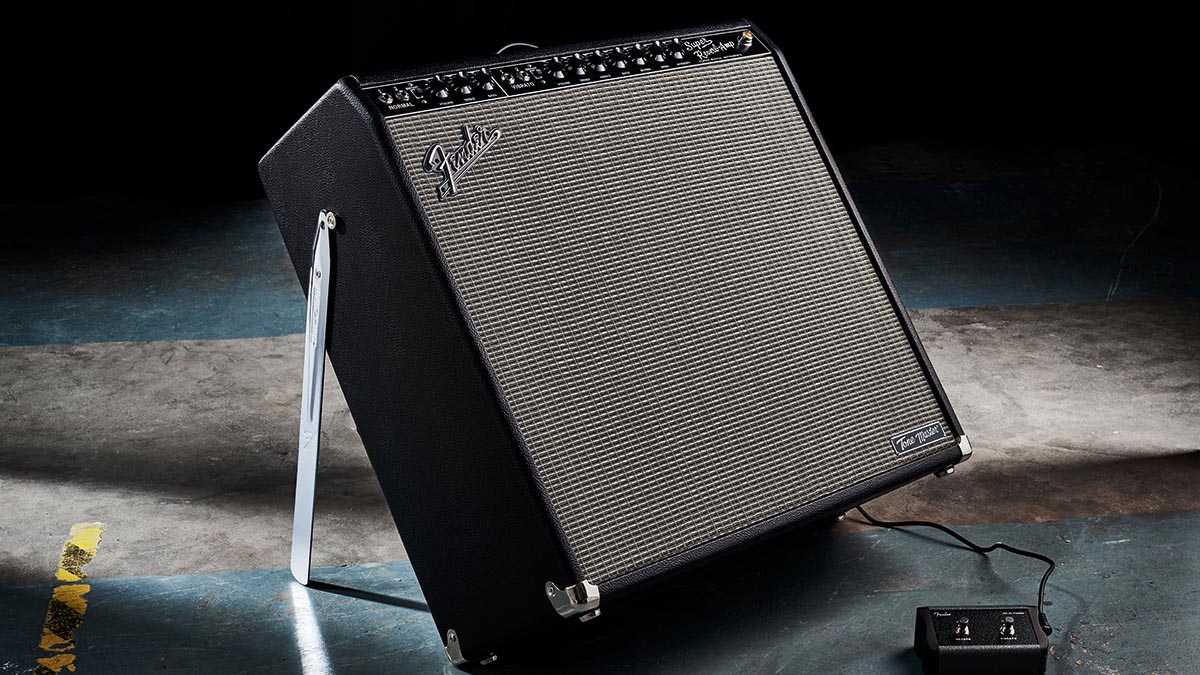Guitar World Verdict
Aimed at pro and amateur players of all levels, it’s a seriously good amp for the money. If you want to experience classic '60s Fender tone and your car has the boot space, we’d say go for it!
Pros
- +
Best ever Fender black-panel digital model.
- +
Authentic tone.
- +
Totally consistent.
- +
Excellent recording/PA direct output.
- +
Great pedal platform.
Cons
- -
Still a big box to carry around.
- -
Plywood cab not solid pine of other Tone Master amps.
- -
Hyper-realistic reverb may be too bright for some.
You can trust Guitar World
As one of Fender’s most famous tube amps, the Super Reverb also enjoyed one of the longest unbroken catalogue residencies, arriving in 1963 and staying for nearly 20 years.
Having survived the CBS silver-panel transition, the Super went through various circuit evolutions for more efficient performance and higher wattage: the original GZ34 rectifier valve was replaced with a 5U4GB then silicon diodes, together with added Normal channel mid control, pull boost and master volume features.
By the mid-'70s, Fender’s amplification range was in a somewhat confused state, with a mixture of legacy silver-panel and new black-panel products – such as the notorious 180-watt Super Twin and 400 PS head designed by renowned engineer Ed Jahns – as Fender scatter-gunned ideas to regain its dwindling market share.
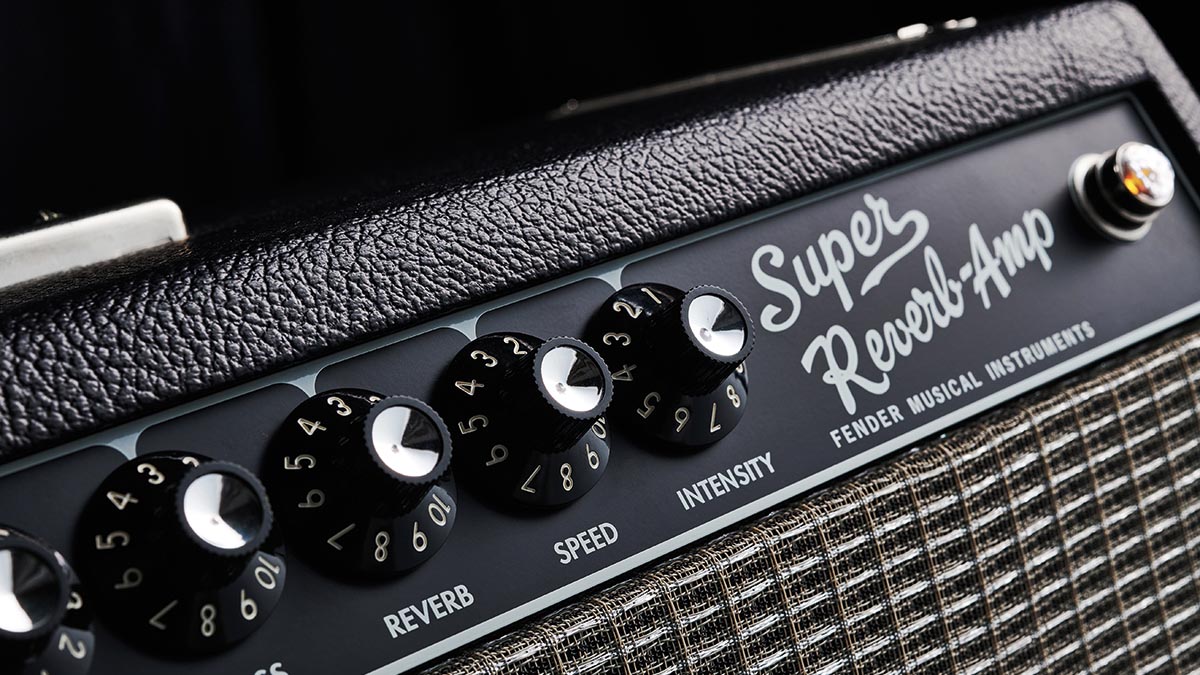
The very last Super Reverb models returned to black-panel cosmetics (but not electronics) before being discontinued along with Fender’s entire amplification range in 1982. This was to make way for the famous Rivera amplifiers, created by a team headed up by legendary amp guru Paul Rivera Sr, which were the last hand-wired products to leave the old Fullerton production line, following CBS’s sale of the company in 1985.
Happily, the story doesn’t end there. In 2001, Fender added a well-received ’65 Super Reverb reissue to its catalogue and now here is the highly anticipated all-digital version, the Tone Master Super Reverb.
Viewed from the front, there’s nothing except for a discreet badge in the bottom-right corner of the period-correct silver sparkle grille to distinguish the Tone Master Super Reverb from its all-valve cousin. The rest of the black-panel cosmetics are similarly spot on, with heavy duty Tolex, chrome corners, tilt-back legs and a single black carry handle on top.
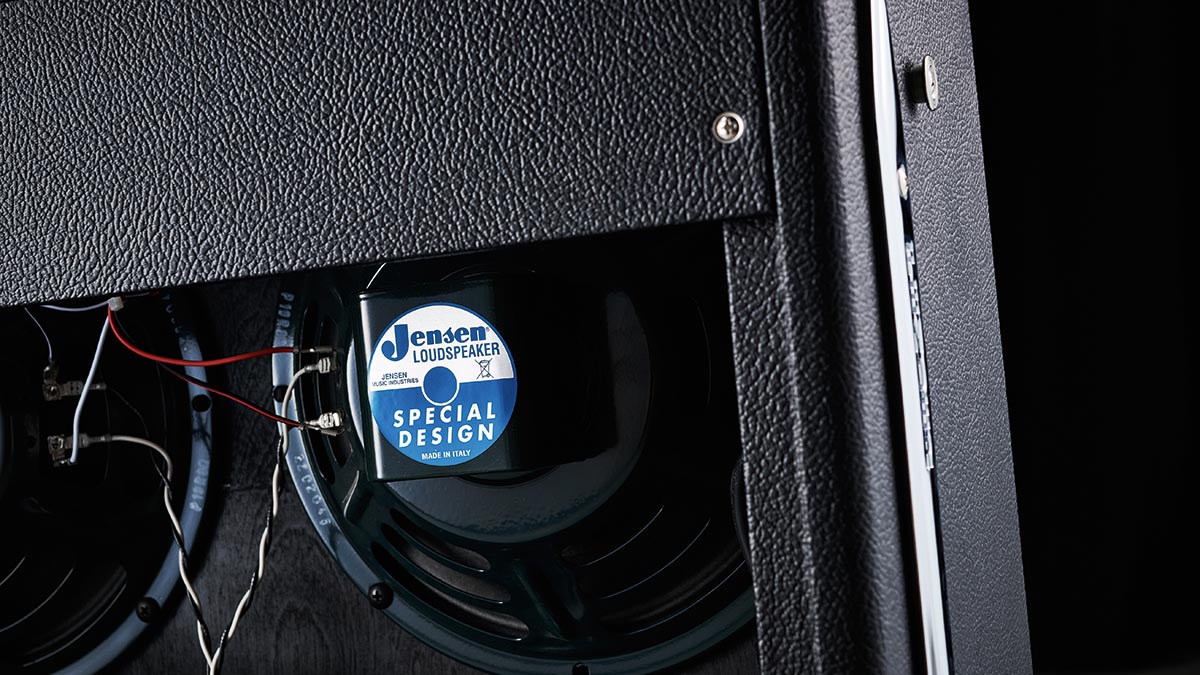
From the back, though, it’s clear the Tone Master is a completely different animal. The steel chassis is similar, but there are no valves or heavy transformers hanging from it. Instead, the sounds come from a powerful DSP fully utilized to recreate just one amp, driving a specially designed 200-watt Class D output stage.
Fender has sensibly retained Jensen’s excellent P10R Alnico, the same loudspeaker found on the all-valve reissue, while the cabinet is meranti plywood, a minor disappointment as other Tone Master products use solid pine.
Inside the chassis, the electronics are mounted on high-quality modular PCBs joined by ribbon cables, with Molex connectors for easy servicing. Compared with the bird’s nest hand-wired assembly of '60s valve Fenders, the internals are clean and uncluttered – with almost too much empty space.

The front panel stays true to the original early '60s design and has two non-footswitchable channels: the often-forgotten Normal channel with controls for volume, treble and bass; and the Vibrato channel with controls for Volume, Treble, Middle and Bass, along with a Reverb level control, and Speed and Intensity for the historically correct misnamed tremolo effect. Both channels have high- and low-gain inputs and Bright switches.
Around the back, there’s a universal mains socket and a variable power rotary switch that knocks down the emulated valve output from 45 watts to 0.5 watts over six steps.
Next to this is a balanced XLR line output and a choice of two IR cabinet emulations with a bypass, level control and a useful ground lift. The Tone Master Super Reverb looks the part and has superior build quality and classic styling that hasn’t lost any of its visual appeal over the last six decades.
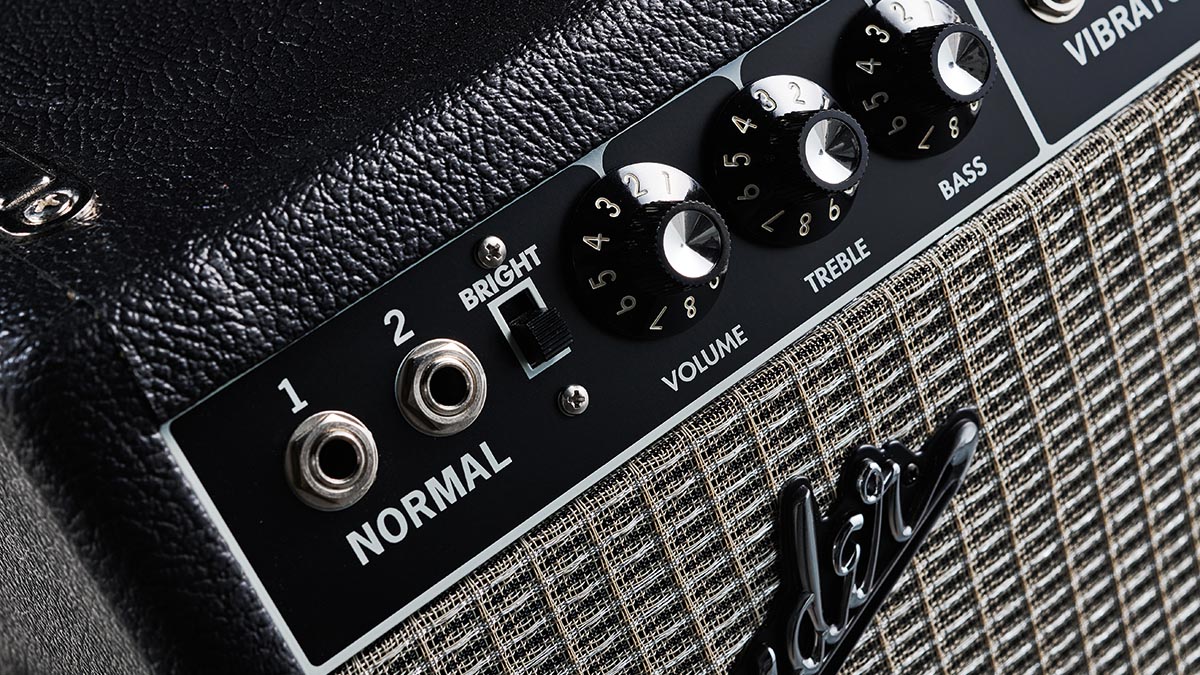
Feel & Sounds
The Tone Master Super Reverb retains the two mains toggle switches, which have similar functions. Powering on causes the jewel indicator to flash red and amber for a few seconds while the amp boots up, before settling down in red for live mode. Flipping the Standby toggle switch puts the amp into mute mode, which changes the jewel colour to amber, with the rear-panel line out staying active for recording or quiet stages.
The Tone Master’s sounds are typical early '60s black-panel – but better because there’s practically no background noise
The original Super earned its reputation in the hands of Stevie Ray Vaughan, Robben Ford, Robert Cray and many other stellar players. The Tone Master version’s sounds are typical early '60s black-panel – but better because there’s practically no background noise.
The massive digital processing power takes it way beyond other modelling amps and plug-ins, with sweet shimmering highs that turn into an aggressive bite as the volume is turned up.
Just like the originals, bass frequencies can be overpowering so the bass tone control typically stays on 3, with treble and middle on 6 or 7 for a great tone with a natural midrange ‘scoop’. The Bright switches come in useful to tame overly bright single coils.
The amp begins to bare its teeth once the volume control is turned above halfway, chewing up notes and spitting them out with a fiery vocal distortion that’s very much USA-centred and ideal for blues and classic rock, especially using a beefy humbucker with the Volume control on 10.
The wonderful overdrive can be enjoyed at pain-free volume levels when needed thanks to the rear-panel rotary power switch. We found some great tones with a borrowed original ’72 Les Paul Custom and our Duncan Alnico Pro-loaded Strat.
You can take the Super Reverb from its maximum emulated 45 valve watts down to 0.5 watts in six steps, quickly dialling the amp in for any size of stage. For the average pub gig we think the five-watt setting is more than adequate for cranked sounds, but if you need clean volume there’s plenty.
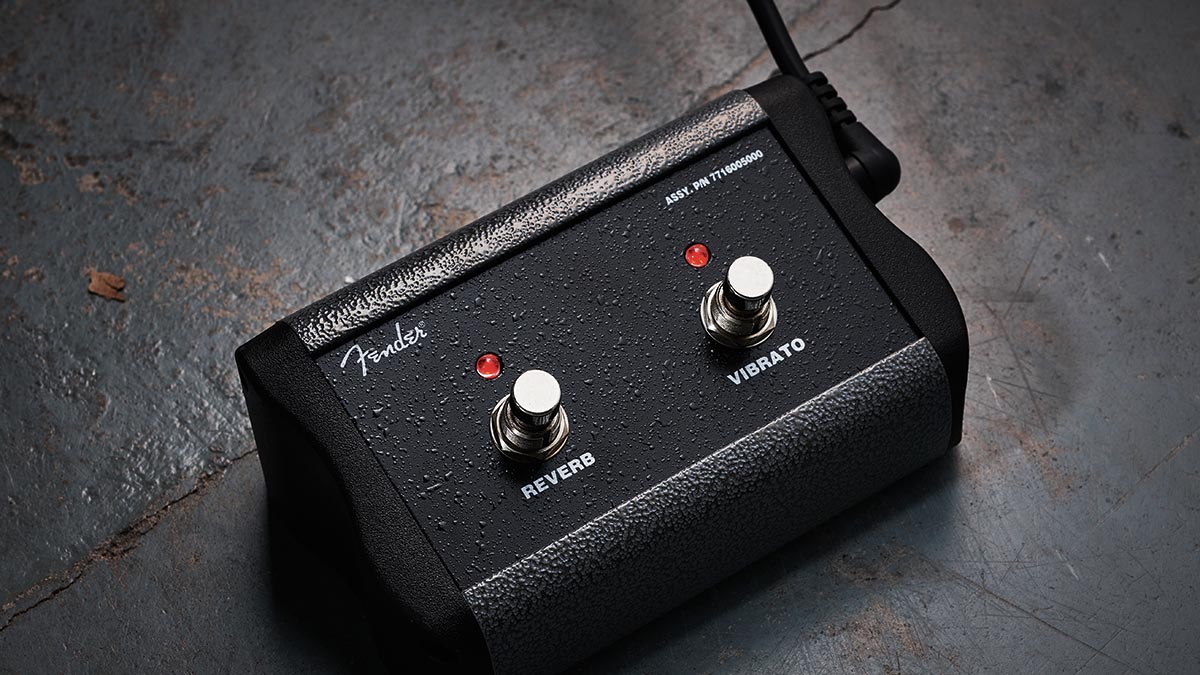
Four speakers and 200 watts of Class D power equals a mountain of headroom, making the Super a great platform for pedals. With no effects loop, you have to plug your ’board into the front-end. We had great results with overdrive and modulation into the Normal channel’s low-gain input, using a rotary speaker effect to get a satisfyingly close approximation of the old Vibratone sound.
The balanced line out IRs and effects are generally superb. The convolution reverb may be a touch too bright for some ears, though the incredible detail makes it possible to pick out individual spring oscillations as the reverb level is increased, while the tremolo goes from slow atmospheric pulses to stuttering psychobilly on maximum speed and intensity. The effects are ordered in the same way as the original, so the tremolo cuts off the reverb tail.
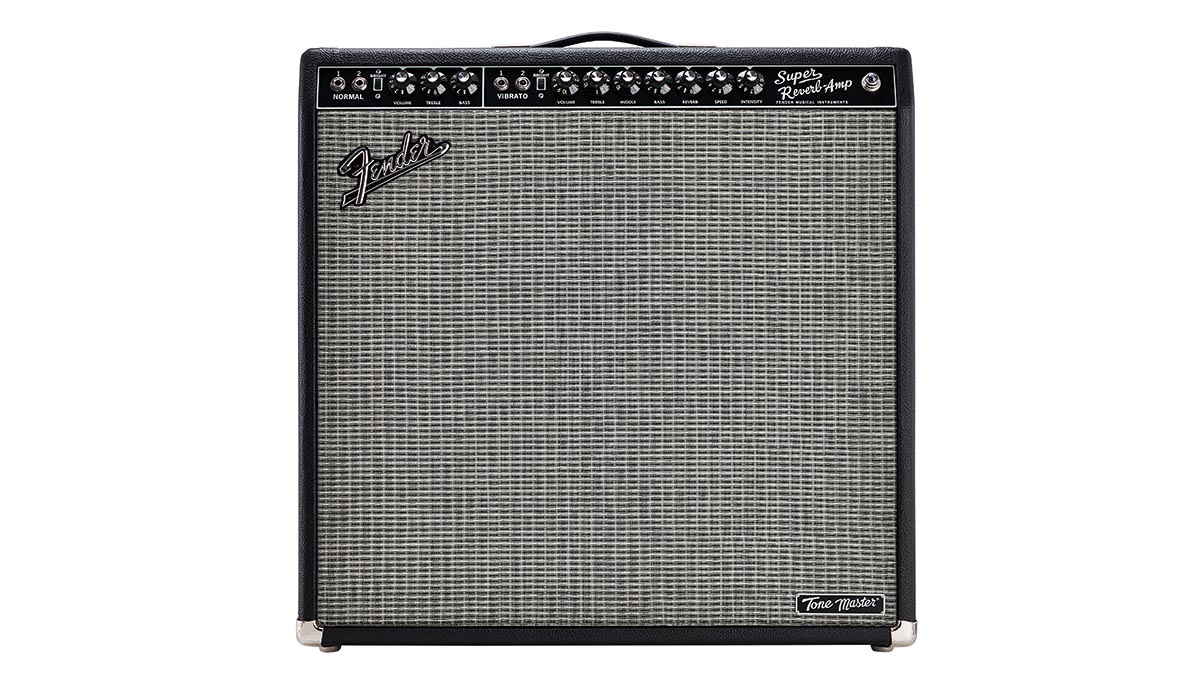
Verdict
Fender’s Tone Master Super Reverb nails the original 1960s vibe so well, we think many players will find it difficult to tell the difference. The tone, effects and dynamics make it really easy to forget you’re not using a valve circuit. The big digital advantage is sonic consistency and reliability from one gig to the next, with no valves to splutter, pop, fizz, lose bias or otherwise spoil your tone.
This is increasingly relevant as there are just a few valve mass-production lines left to serve global demand. There’s no immediate risk of supplies drying out, but the quality of new valves is likely to fall, while prices will inevitably go in the opposite direction.
Which brings us to the other compelling argument: the Tone Master Super Reverb retails for £1,000 less than the all-valve ’65 Super Reverb reissue, making it hugely more affordable as well as easier to carry. Aimed at pro and amateur players of all levels, it’s a seriously good amp for the money. If you want to experience classic '60s Fender tone and your car has the boot space, we’d say go for it!
Specs
- PRICE: $1,249 / £1,299
- ORIGIN: USA
- TYPE: Digital modelling preamp, Class D power stage
- OUTPUT: 200W into 2ohms (simulating 45W valve), switchable down to 0.5W in 6 steps
- DIMENSIONS: 629 (h) x 638 (w) x 267mm (d)
- WEIGHT (kg/lb): 16.5/36
- CABINET: Meranti ply
- LOUDSPEAKERS: 4x Jensen P10R Alnico 10”
- CHANNELS: 2
- CONTROLS: Normal channel: Bright switch, Volume, Treble, Bass. Vibrato channel: Bright switch, Volume, Treble, Middle, Bass, Reverb, Vibrato Speed, Intensity. Line out level, IR select, ground lift in/out
- ADDITIONAL FEATURES: Balanced XLR line out with ground lift and level control, 3x switchable impulse response cab sims. Firmware updates via USB port on bottom of chassis
- FOOTSWITCH: 2-button footswitch (supplied) toggles vibrato and reverb
- RANGE OPTIONS: Jensen N12‑K-powered Tone Master Deluxe Reverb (£919); blonde Celestion Neo Creamback-loaded option (£959). Tone Master Twin Reverb with neodymium Jensens (£1,099); blonde Celestion option (£1,139). All-valve ’65 Super Reverb reissue (£2,299)
Nick Guppy was Guitarist magazine's amp guru for over 20 years. He built his first valve amplifier at the age of 12 and bought, sold and restored many more, with a particular interest in Vox, Selmer, Orange and tweed-era Fenders, alongside Riveras and Mark Series Boogies. When wielding a guitar instead of soldering iron, he enjoyed a diverse musical career playing all over the UK, including occasional stints with theatre groups, orchestras and big bands as well as power trios and tributes. He passed away suddenly in April 2024, leaving a legacy of amplifier wisdom behind him.
